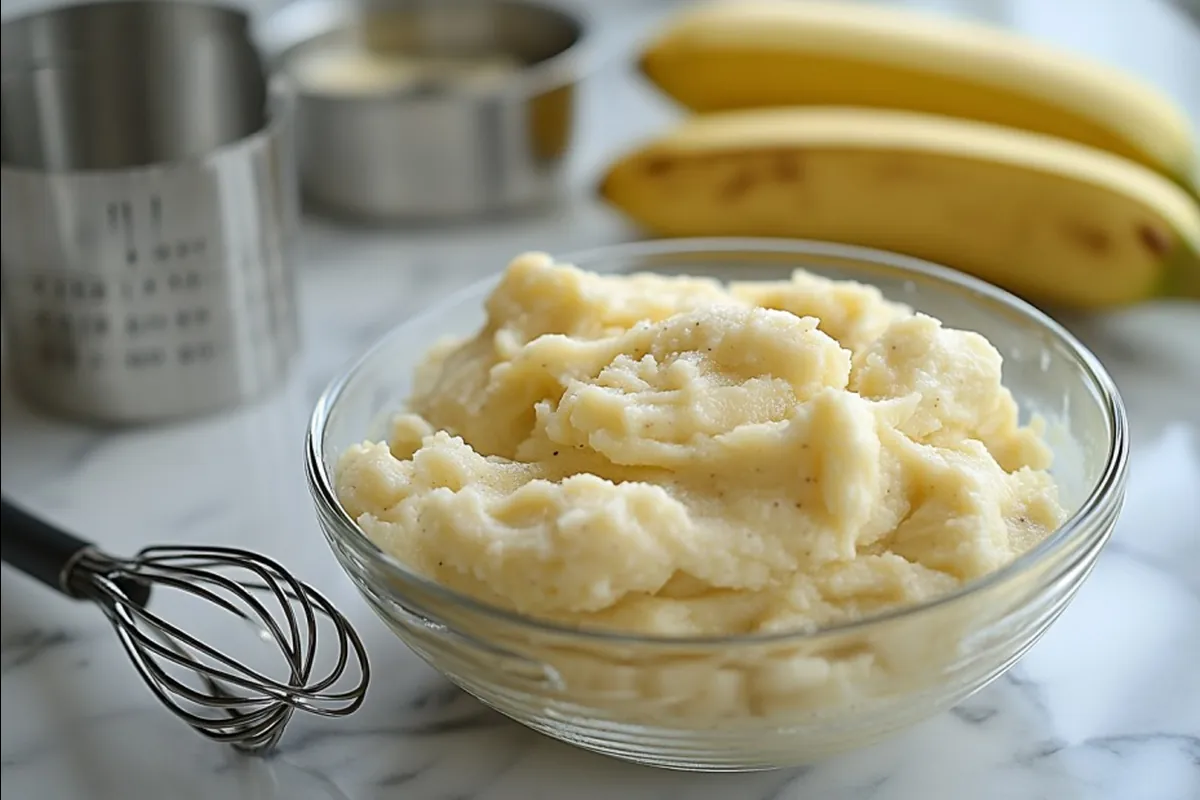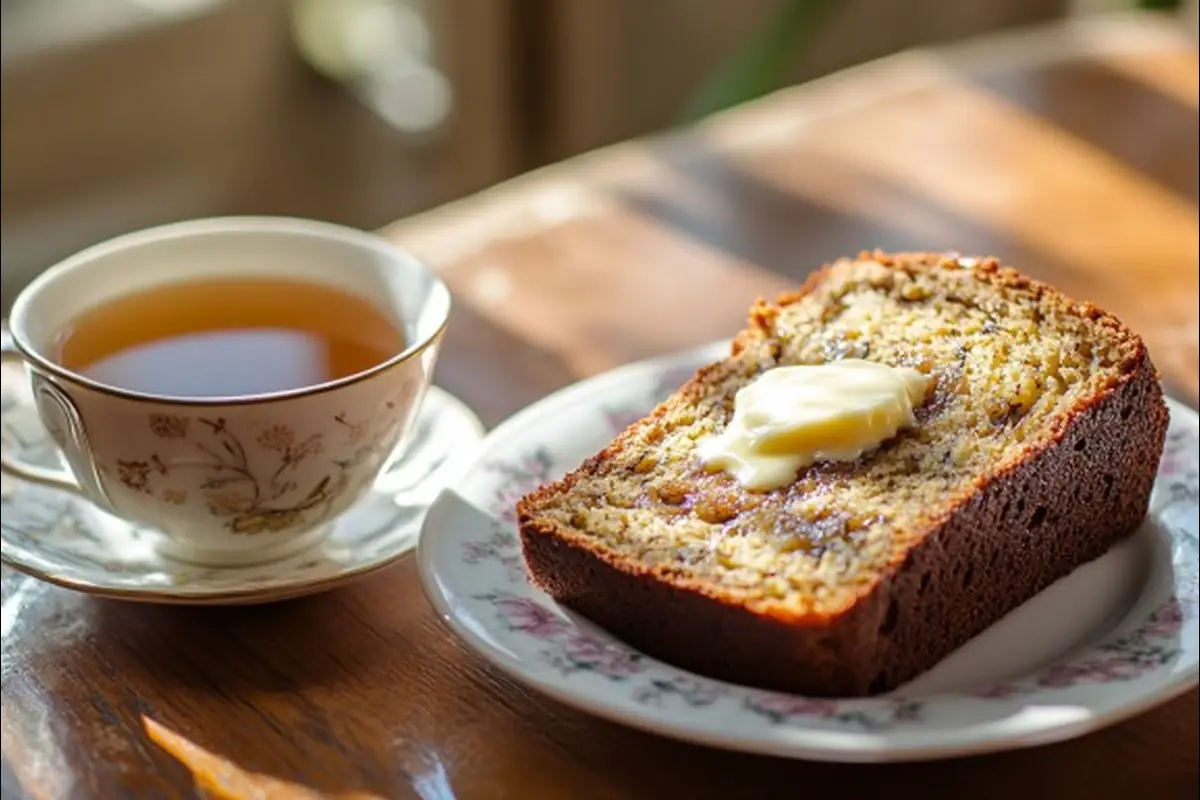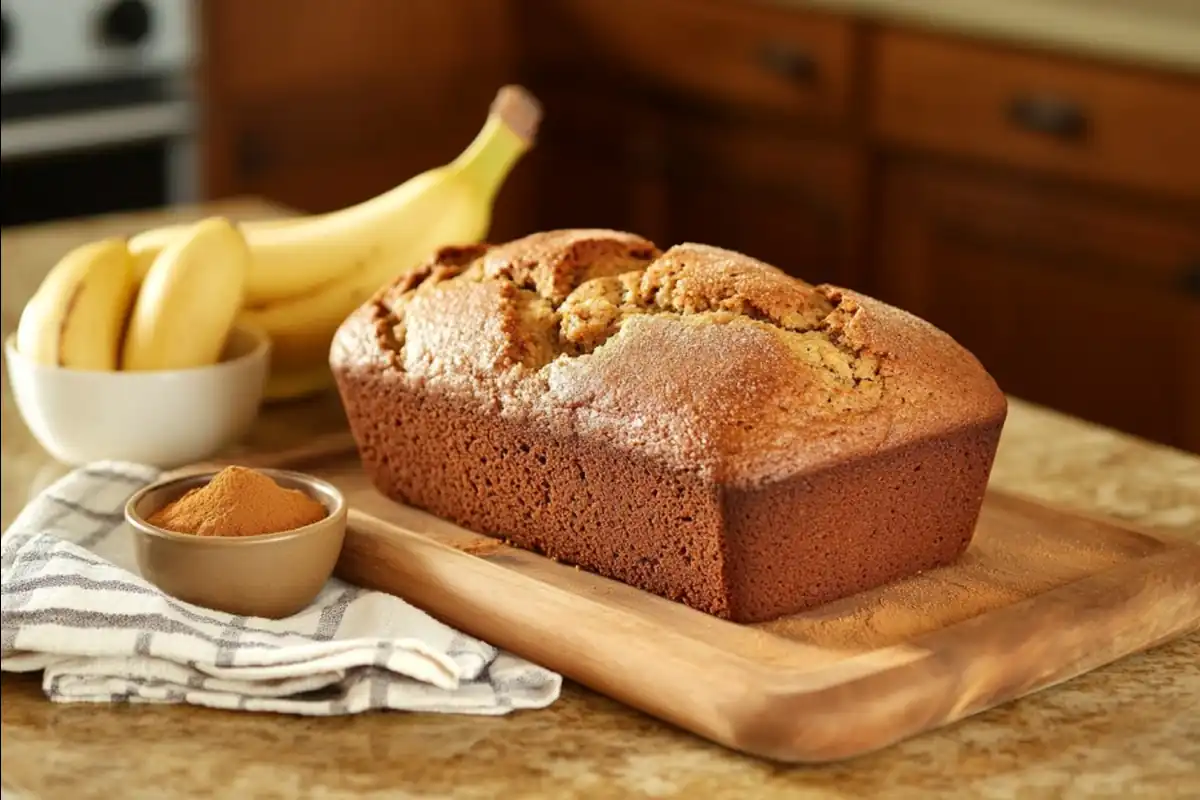Why does my banana bread not taste good? Banana bread is a comforting treat loved by many, but sometimes it lacks flavor or falls flat—literally and figuratively. If your loaf isn’t as tasty as you hoped, don’t worry; you’re not alone. In this guide, we’ll uncover why banana bread might lack flavor and explore practical fixes. From choosing the right bananas to perfecting ingredient proportions, this article breaks down every possible issue and how to solve it. Let’s dive in and make your next banana bread irresistibly delicious!
1: Understanding the Problem
The Importance of Flavor in Banana Bread
Banana bread isn’t just about a moist texture—it’s about bold flavors that make every bite enjoyable. The natural sweetness of bananas, enhanced by complementary ingredients, creates that comforting taste everyone craves. When these flavors fall short, your loaf becomes disappointing. Understanding why flavor matters is the first step toward baking perfection.
Identifying the Core Issue
To solve the mystery of bland banana bread, it’s crucial to pinpoint the root cause. Several factors can influence flavor, from using the wrong bananas to missing key ingredients. Even subtle tweaks can make or break your loaf. Are your bananas too green? Did you forget a pinch of salt? Small missteps like these add up. Learning to identify and address these issues will set you up for consistent success.
2: Key Reasons Your Banana Bread Tastes Bland
Using Overripe or Unripe Bananas
The bananas you choose can make or break your banana bread. Overripe bananas are ideal because their natural sugars are at their peak, offering the sweet, rich flavor needed for a perfect loaf. On the flip side, unripe bananas lack this sweetness and can leave your bread tasting bland. Look for bananas with brown spots—they’re not just easier to mash, but they also pack a flavor punch!
Ingredient Imbalance
Did you know that the balance between wet and dry ingredients heavily influences flavor? Too much sugar can overpower the natural banana taste, while too little can leave your bread tasteless. Similarly, fats like butter or oil add richness, making your bread moist and flavorful. If you’re using a low-fat recipe, consider adding a splash of Greek yogurt for extra depth.
Insufficient Flavor Enhancers
Spices and other flavor boosters are often overlooked, yet they play a starring role in banana bread. A dash of cinnamon, a splash of vanilla extract, or even a pinch of nutmeg can elevate the natural banana taste. Without these enhancers, your bread might fall flat. Don’t be afraid to experiment—chocolate chips, walnuts, or shredded coconut can also add texture and flavor variety.
3: How to Maximize Banana Flavor for the Perfect Loaf

Choosing the Right Bananas
To ensure your banana bread is bursting with flavor, start by selecting the right bananas. Store bananas at room temperature to allow them to ripen naturally. If you’re in a hurry, placing them in a brown paper bag with an apple can speed up the ripening process. Overripe bananas—soft, fragrant, and speckled with brown—are the gold standard for baking.
Prepping Bananas for Baking
How you prepare your bananas also affects the flavor and texture of your bread. Mashing them by hand gives your bread a rustic, chunky texture, while blending creates a smoother batter. If your bananas are too firm, warm them in the oven at 300°F for a few minutes to soften and intensify their sweetness.
Enhancing the Recipe
Want to take your banana bread to the next level? Incorporate complementary ingredients like brown sugar, which adds a caramelized sweetness, or spices such as cardamom for a unique twist. For a more decadent treat, mix in chocolate chips, dried fruit, or nuts. These additions not only enhance the flavor but also make each bite more satisfying.
For more insights into avoiding common baking mistakes, you might find the article on Mistakes When Making Banana Bread helpful. It dives deeper into troubleshooting issues to achieve the perfect loaf.
4: Troubleshooting: Why Does My Banana Bread Not Taste Good?
What Happens When You Add Too Much Banana?
It might seem logical to load up on bananas to boost flavor, but too much of a good thing can spell trouble. Excessive bananas can make your bread overly dense, sticky, and sometimes even too sweet. This not only affects the texture but also mutes other flavors in the recipe. The key is balance—stick to the recipe’s banana measurements, usually 2–3 medium bananas for a standard loaf.
If you’ve already added too much banana and your loaf turned out gummy, don’t worry! Next time, try reducing the other wet ingredients slightly to restore balance. Alternatively, baking the bread a little longer at a lower temperature can help evaporate excess moisture.
Balancing Wet and Dry Ingredients
The harmony between wet and dry ingredients is what creates a tender, flavorful loaf. Too much flour can dry out your bread and overpower the banana flavor, while too little can leave it overly moist. Use the spoon-and-level method to measure flour accurately—scooping directly from the bag often results in extra flour.
Additionally, don’t skip the salt. Though it’s a small addition, it amplifies the sweetness and flavor of the bananas, making your bread taste just right.
Overmixing the Batter
One of the most common pitfalls in banana bread baking is overmixing. When you stir too much, you activate the gluten in the flour, leading to tough, chewy bread. Mix your ingredients until just combined—a few streaks of flour are okay! This preserves the tender crumb banana bread is known for.
5: Enhancing Your Banana Bread Recipe
Adding Unique Ingredients for Flavor Boost
To make your banana bread stand out, consider adding unique ingredients that complement the natural sweetness of bananas. For example, mixing in a swirl of peanut butter or cream cheese can create a delightful twist. You could also fold in dark chocolate chips or dried fruits like cranberries to add a burst of flavor. These additions not only enhance the taste but also add texture, making each bite more enjoyable.
For those who enjoy a nutty crunch, try sprinkling chopped walnuts, pecans, or even shredded coconut into the batter. These ingredients not only elevate the flavor but also give your banana bread a gourmet touch.
Using Spices and Extracts
If your banana bread consistently tastes bland, spices and extracts are your best friends. A teaspoon of cinnamon or a dash of nutmeg can work wonders in enhancing the bread’s warmth and depth. Vanilla extract is another must-have—it subtly amplifies the banana flavor while adding a rich aroma.
For a more adventurous flavor profile, try experimenting with cardamom, ginger, or even a splash of rum extract. These small tweaks can transform your banana bread into a bakery-worthy treat.
6: Storing and Serving Banana Bread
Proper Storage Techniques
Even the best banana bread can lose its flavor and texture if not stored correctly. To keep your loaf moist and flavorful, wrap it tightly in plastic wrap or aluminum foil once it has cooled completely. Store it at room temperature for up to three days, or refrigerate it for a longer shelf life.
For extended storage, freeze the loaf or individual slices. Wrap them in plastic and place them in an airtight container. When you’re ready to enjoy, thaw the slices at room temperature or warm them slightly in the microwave for a fresh-from-the-oven experience.
Creative Serving Ideas

Banana bread is delicious on its own, but why not elevate it further? Serve warm slices with a dollop of whipped cream, a drizzle of honey, or even a scoop of vanilla ice cream for dessert. For breakfast, pair it with a spread of cream cheese or a smear of almond butter.
To make the presentation more festive, sprinkle powdered sugar on top or add a decorative glaze. Whether served simply or dressed up, your banana bread is sure to impress.
If you’ve ever wondered Why Does My Banana Bread Not Taste Good?, these tips can help you troubleshoot and improve every aspect of your recipe. By enhancing flavors with spices and carefully storing your loaf, you’ll ensure it tastes amazing every time.
7: Adapting Recipes for Dietary Preferences
Making Banana Bread Healthier
If you’re looking to make banana bread healthier without sacrificing flavor, there are simple adjustments you can try. Replace regular flour with whole wheat or almond flour for added nutrients. Swap out white sugar for natural sweeteners like honey, maple syrup, or coconut sugar to reduce refined sugar content. Additionally, using Greek yogurt instead of butter can cut down on fat while keeping the loaf moist.
Adding superfoods like chia seeds, flaxseeds, or oats can boost the nutritional value. These ingredients provide fiber and a subtle crunch, making your banana bread both delicious and wholesome.
Gluten-Free and Vegan Alternatives
Adapting banana bread for specific dietary needs is easier than ever. For a gluten-free version, use a 1:1 gluten-free baking flour or oat flour. To make it vegan, replace eggs with flax eggs (1 tablespoon of flaxseed meal mixed with 2.5 tablespoons of water per egg). Coconut oil or plant-based margarine can be used instead of butter.
Don’t forget to adjust the flavor enhancers, too. For instance, add a splash of almond milk or soy milk to maintain the loaf’s moisture and softness.
8: FAQs: Solving Issues With Flavorless Banana Bread
Why Is My Banana Bread Not Flavorful?
A lack of flavor in banana bread often comes down to bland bananas or missing ingredients. Make sure your bananas are fully ripe and fragrant. Don’t skimp on flavor boosters like vanilla extract or spices—these small additions make a big difference!
How Can I Maximize Banana Flavor?
For the most flavor-packed bread, use overripe bananas with lots of brown spots. Add brown sugar for caramel-like depth, and try incorporating warm spices like cinnamon or nutmeg. If you’re feeling adventurous, mix in a handful of chocolate chips or toasted walnuts.
What Happens When You Add Too Much Banana to Banana Bread?
Adding too much banana can create a dense, overly moist loaf. Stick to 2–3 bananas per recipe. If you’re experimenting with extra banana, adjust other wet ingredients or baking time to maintain balance.
Why Does My Banana Taste Bland?
Bananas can taste bland if they’re not ripe enough. Look for bananas with brown speckles and a rich aroma. If they’re too green, let them sit at room temperature for a few days, or speed up the process by placing them in a paper bag.
For readers interested in elevating their baking skills, explore this guide on Mistakes When Making Banana Bread. It’s packed with practical tips for perfecting your recipe.
9: Why Does My Banana Bread Not Taste Good? Final Thoughts
Reflecting on Common Issues
After exploring the ins and outs of banana bread baking, it’s clear that bland banana bread can result from several factors. Whether it’s the ripeness of the bananas, ingredient imbalances, or missing flavor enhancers, there’s always room for improvement. Small changes, like using overripe bananas or adding cinnamon, can make a big difference.
Another common culprit is overmixing the batter. This simple mistake often leads to tough, chewy bread that lacks the tender texture we love. By following the tips outlined in this article, you can troubleshoot and avoid these pitfalls.
Embracing Your Best Banana Bread
Remember, banana bread is as versatile as it is delicious. From classic recipes to healthier or gluten-free versions, there’s a perfect loaf for every preference. By taking the time to understand what went wrong—Why Does My Banana Bread Not Taste Good?—you can transform your baking routine and create banana bread that’s consistently flavorful and satisfying.
For your next bake, don’t be afraid to experiment. Try adding unique ingredients or exploring alternative flours. With practice and a little creativity, you’ll soon have a go-to recipe that everyone will rave about.


3 thoughts on “Why Does My Banana Bread Not Taste Good? Common Issues and Solutions”